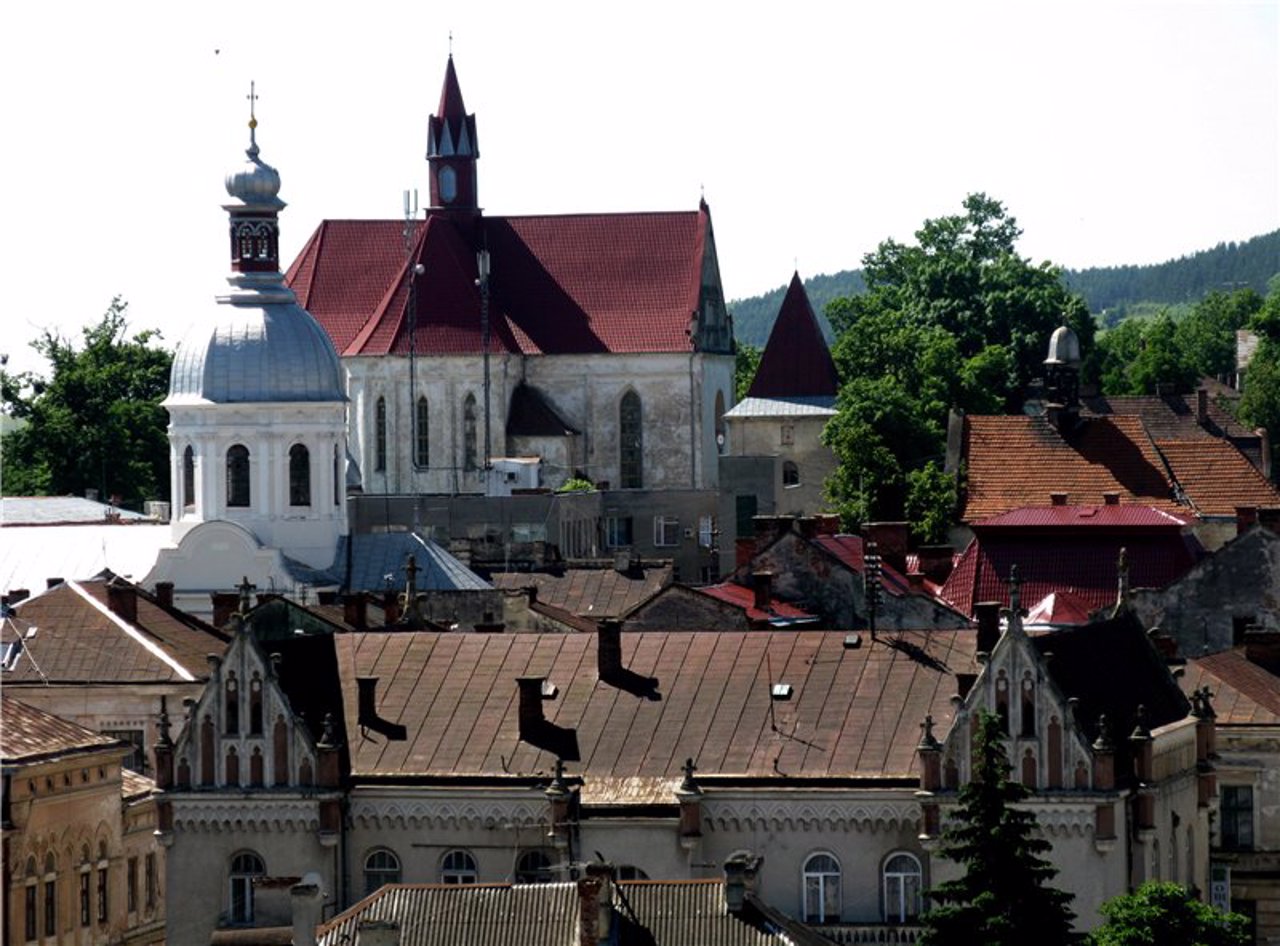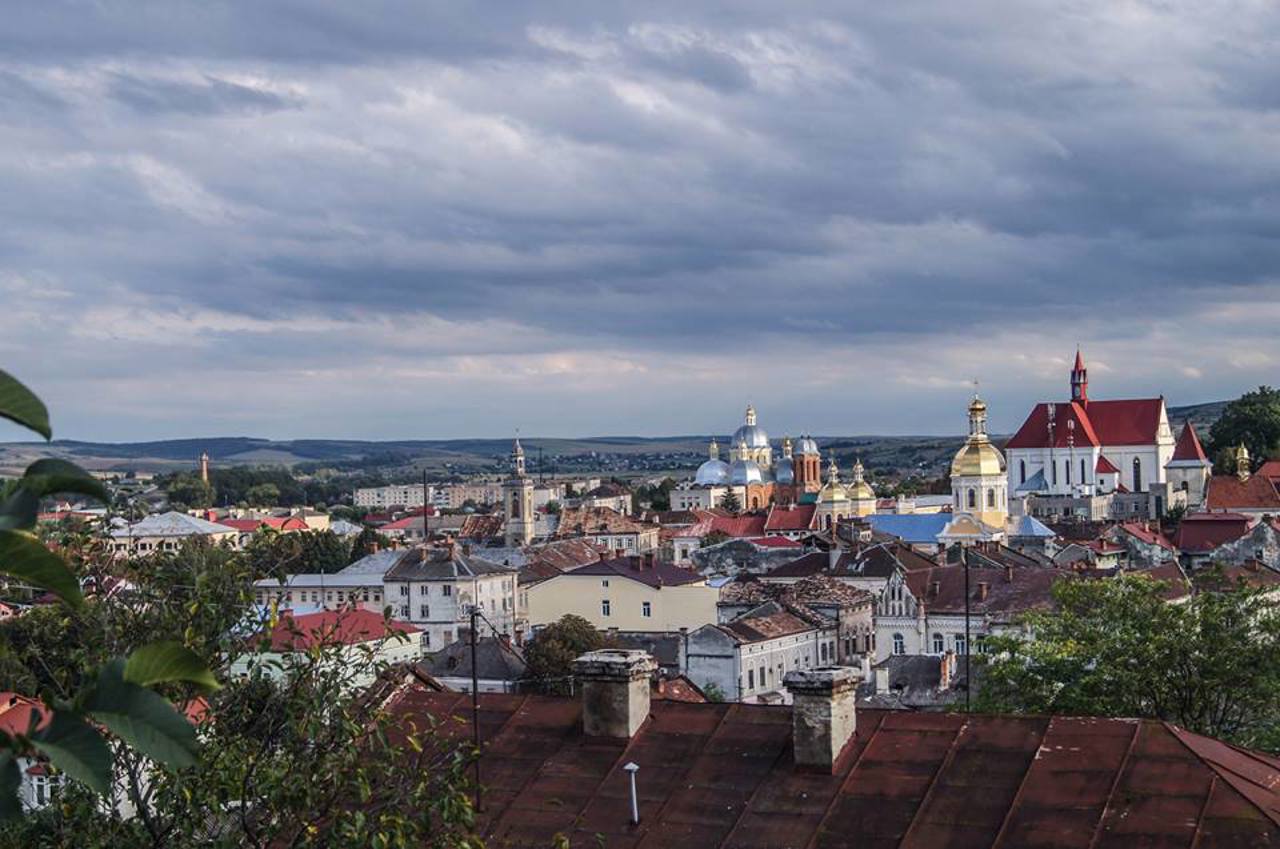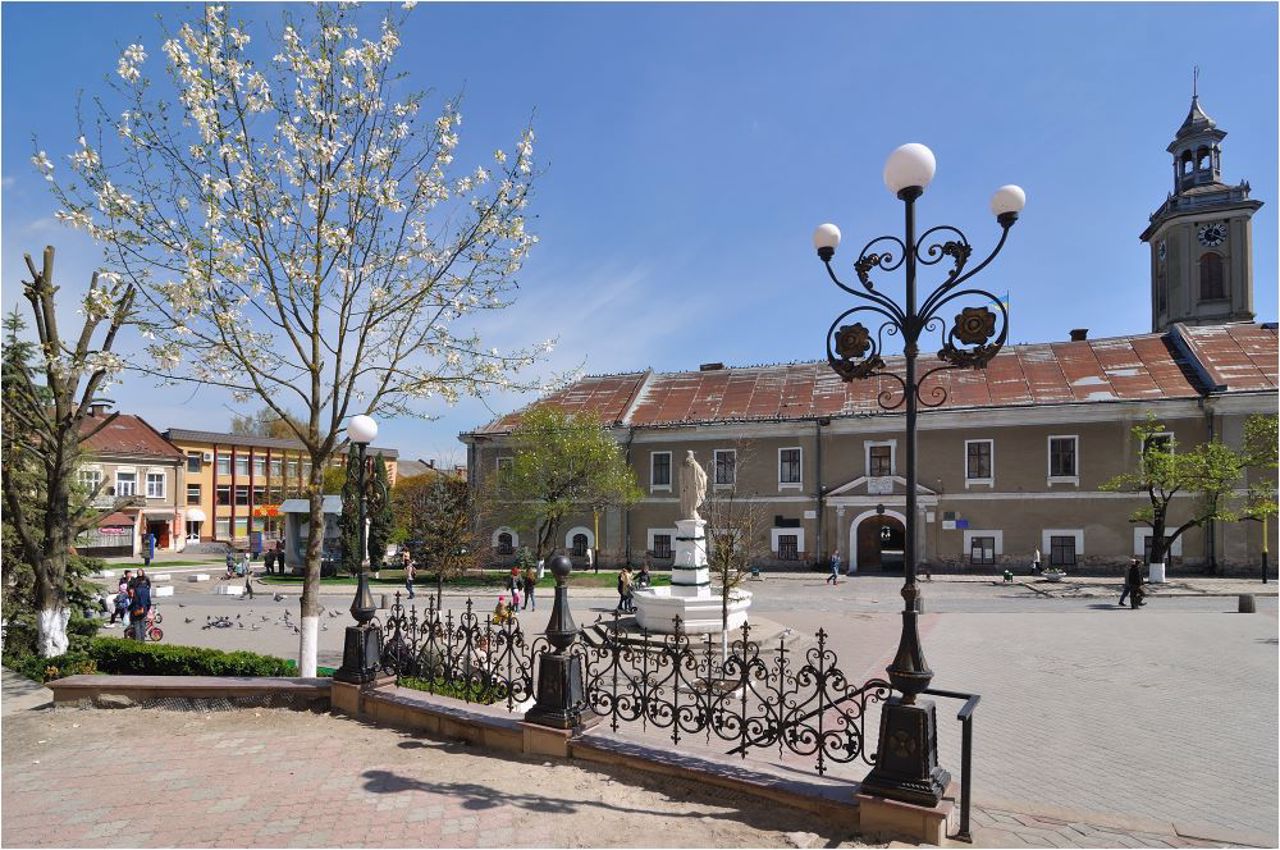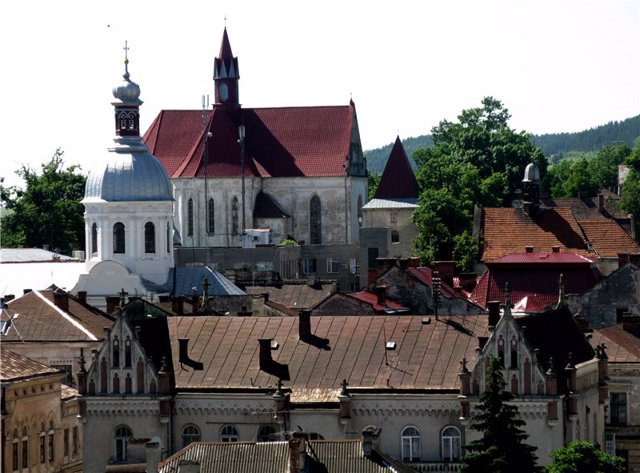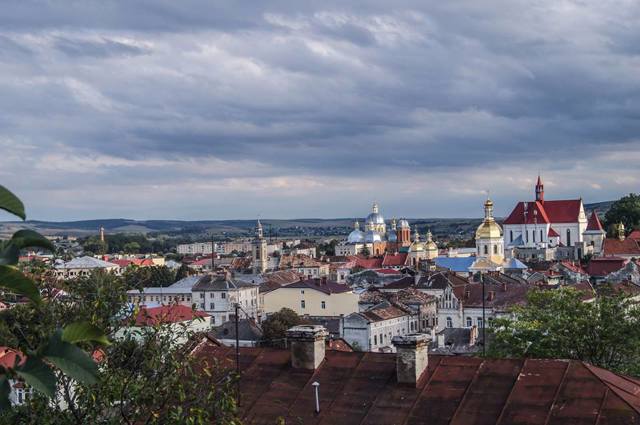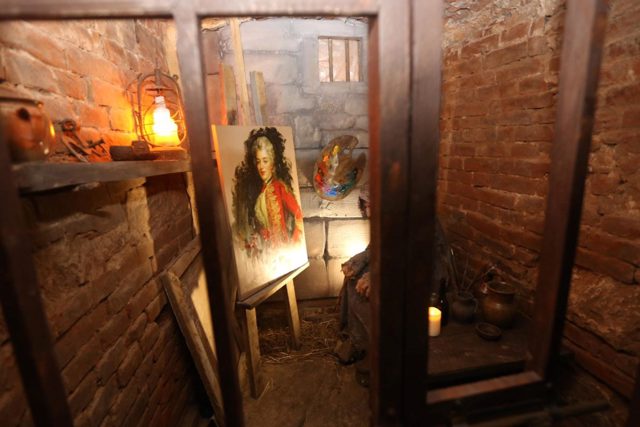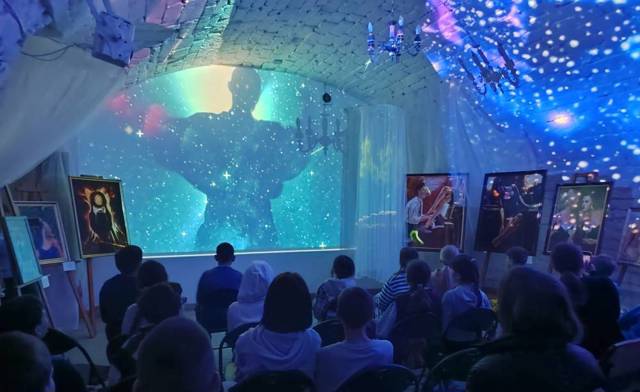Functional temporarily unavailable
General information about Berezhany
The beautiful provincial town of Berezhany is located among the hills in the valley of the Zolota Lypa River, between Ternopil and Stryi.
It was first mentioned in 1375, when these lands were transferred by Prince Władysław Opolczyk to the Rus boyar Vasko Teptukhovych. For a long time, the city was under the rule of the Roman Catholic clergy, which is clearly expressed in the architecture - among the historical buildings, Catholic churches dominate.
The Polish magnates Sieniawski made a significant contribution to the development of the city: in the 16th century, they built a defense complex with a castle, and the city received Magdeburg law. After the death of the last of the Sieniawski family in the 18th and 19th centuries, the city passed from the hands of the Czartoryski ...
The beautiful provincial town of Berezhany is located among the hills in the valley of the Zolota Lypa River, between Ternopil and Stryi.
It was first mentioned in 1375, when these lands were transferred by Prince Władysław Opolczyk to the Rus boyar Vasko Teptukhovych. For a long time, the city was under the rule of the Roman Catholic clergy, which is clearly expressed in the architecture - among the historical buildings, Catholic churches dominate.
The Polish magnates Sieniawski made a significant contribution to the development of the city: in the 16th century, they built a defense complex with a castle, and the city received Magdeburg law. After the death of the last of the Sieniawski family in the 18th and 19th centuries, the city passed from the hands of the Czartoryski, Lubomirski, and Potocki.
It owes its cultural and architectural diversity to the Armenian and Jewish communities.
Many temples have a pronounced defensive character.
Гарне провінційне містечко Бережани розташоване серед пагорбів в долині річки Золота Липа, між Тернополем і Стриєм.
Вперше згадується в 1375 році, коли ці землі були передані князем Владиславом Опольським у власність руському боярину Ваську Тептуховичу. Тривалий час місто перебувало під владою римо-католицького духовенства, що яскраво виражено в архітектурі - серед історичної забудови домінують католицькі храми.
Значний внесок у розвиток міста внесли польські магнати Сенявські: в XVI столітті ними зводиться оборонний комплекс з замком, місто отримує Магдебурзьке право. Після смерті останнього з роду Сенявських в XVIII-XIX століттях місто переходить з рук в руки Чарторийських, Любомирських, Потоцьких.
Культурною та архітектурною різноманітністю він зобов'язаний вірм ...
Гарне провінційне містечко Бережани розташоване серед пагорбів в долині річки Золота Липа, між Тернополем і Стриєм.
Вперше згадується в 1375 році, коли ці землі були передані князем Владиславом Опольським у власність руському боярину Ваську Тептуховичу. Тривалий час місто перебувало під владою римо-католицького духовенства, що яскраво виражено в архітектурі - серед історичної забудови домінують католицькі храми.
Значний внесок у розвиток міста внесли польські магнати Сенявські: в XVI столітті ними зводиться оборонний комплекс з замком, місто отримує Магдебурзьке право. Після смерті останнього з роду Сенявських в XVIII-XIX століттях місто переходить з рук в руки Чарторийських, Любомирських, Потоцьких.
Культурною та архітектурною різноманітністю він зобов'язаний вірменській та єврейській громадам.
Багато храмів мають яскраво виражений оборонний характер.
Сплануй своє перебування у Berezhany
What to see and where to go in Berezhany
Tourist attractions and museums of Berezhany
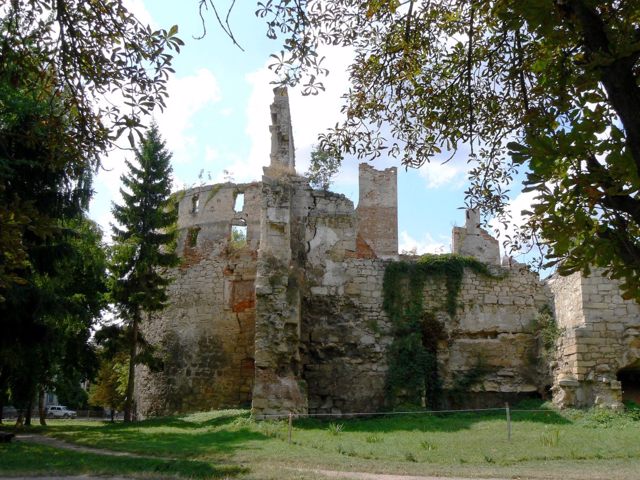
Berezhany Castle of Sieniawski
Castle / fortress , Museum / gallery
The Berezhany Castle of Sieniawski is one of the best examples of Renaissance defensive architecture in Ukraine, which the Poles called the "Eastern Wawel". Monument of architecture and urban planning of national importance.
The magnificent defensive residence in Berezhany was built in 1534-1554 by the Rus (Ukrainian) voivode, Grand Crown Hetman Mikołaj Sieniawski (Mykola Syniavsky). The impregnable fortification with four towers was built by Italian craftsmen according to the New Dutch system by French engineer Hiyom de Boplan using an artificial water barrier in the floodplain of the Zolota Lypa River. The facades of the palace buildings in the castle courtyard were crowned by two-story arcades-galleries like the Italian palazzo, which surrounded the buildings around the perimeter, and the windows were decorated with Renaissance carvings. The interiors of 14 ceremonial halls were decorated with paintings with battle scenes, on the third floor of the palace was a rich art gallery.
The Trinity Church was located on the territory of the castle, the former splendor of which can be judged even in its current dilapidated condition. In the 17th century, the Sieniawski tomb with marble tombstones by Yan Pfister was added to the church. Mikołaj Sieniawski and his sons Hieronim and Jan, as well as Hieronim's wife Anna, were buried here.
In the XIX century the castle began to decline, suffered severe damage during the two world wars. In Soviet times, it was abandoned and turned into a landfill.
In 2002, the Berezhany Castle of Sieniawski became part of the State Historical and Architectural Reserve in Berezhany, and its restoration began. A small museum exposition has been opened on the territory of the castle, excursions are organized, souvenirs can be bought.
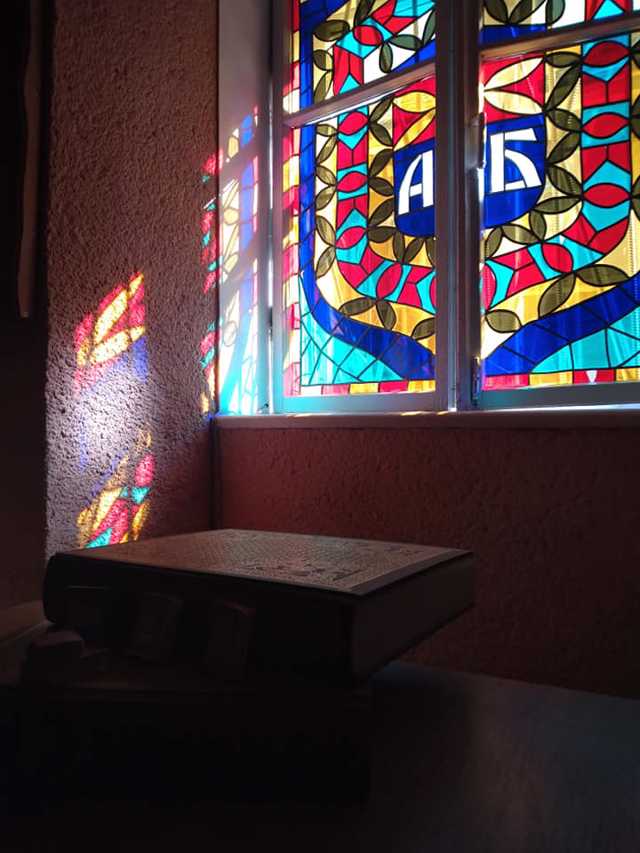
Berezhany City Book Museum
Architecture , Museum / gallery
The Berezhany City Book Museum is located on the first floor of Berezhany City Hall.
Founded in 1984, since 1994 it has been a department of the Ternopil Museum of Local Lore. It tells about the history of printing in Ukraine and about outstanding writers of the region.
The exhibition presents old prints of the XVII-XIX centuries, the first edition of Taras Shevchenko's "Kobzar", "Grammar of the Little Russian Language in Galicia, composed by Ivan Vahylevych" (1845), "Grammar of the Ruthenian (Ruthenian) language" by Yosyp Levytsky (1834).
Also on display are paintings by Lev Lepky, graphics by Olena Kulchytska and others.
A separate exposition is dedicated to the public and philanthropic activities of Roman Smyk.
In addition, the Berezhany City Hall houses the Berezhany Museum of Local Lore, the Museum of Sacred Art and Church History, and the Bohdan Lepky Museum.
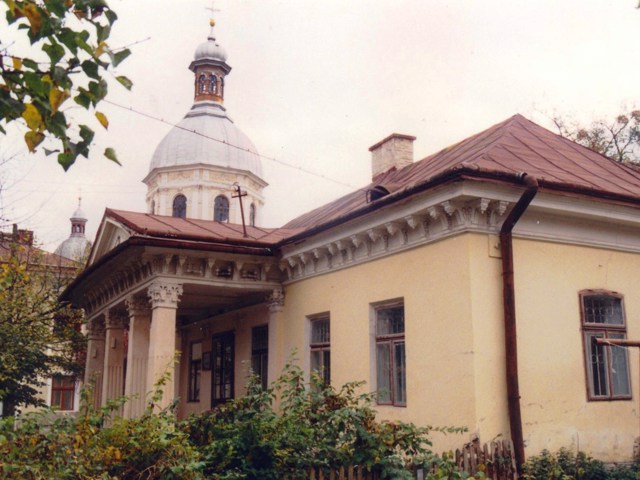
Berezhany Historical and Architectural Reserve
Architecture , Museum / gallery
The State Historical and Architectural Reserve (DIAZ) in Berezhany was established in 2001 to protect, restore and use the city's cultural heritage sites, which preserved European planning buildings from the fourteenth and seventeenth centuries, architectural ensembles Rynok Square, Bankova and Armenian streets.
In total, the reserve unites more than 30 architectural monuments, 6 of which are of national importance, including the Berezhany Castle Complex (Synyavsky Castle).
The administration of the reserve is housed in a manor house in the style of late classicism (empire) of the early XIX century, which is an architectural monument of local significance. The central part of the facade is decorated with a portico with four columns of the Corinthian order and a classical pediment. In 1828-1829, while studying at the local gymnasium, the famous Ukrainian writer and educator Markiian Shashkevych lived in this house.
In the administration of the Berezhany Historical and Architectural Reserve you can book sightseeing tours of the city, thematic tours of the Synyavsky Castle and the outskirts of Berezhany.
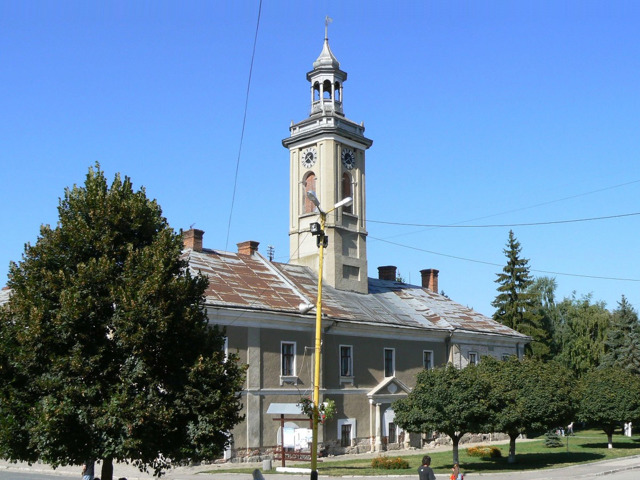
Berezhany Local Lore Museum (City Hall)
Museum / gallery , Architecture
The Berezhany Museum of Local Lore is located on the second floor of the Berezhany City Hall, which is an architectural monument of national importance.
Built in 1803-1811, the two-story City hall building with a clock tower reflects the typical Halician style of provincial urban planning of the early classicism period. It is the central architectural dominant of the Rynok Square in Berezhany.
On the ground floor there were shops, and on the second floor in 1805 the Berezhany Gymnasium was opened, where the writer and educator Markiian Shashkevych and the writer-literary critic and public figure Bohdan Lepky studied.
The Berezhany Museum of Local Lore opened here in 1980. The museum exposition is opened in 26 halls: "Natural Hall", "Archeology Hall", "Middle Ages and Cossack times in Berezhany", "Berezhany Gymnasium - center of education, science and culture", "Literary Berezhany", "Plast History and Political Repression Hall", "World War II", "Boyan Choir", "National Revival Hall", "Lemko Room", etc.
The model of Berezhany Castle attracts the attention of visitors, as well as exhibits that tell about the history of the Sieniawski family and the birth of Berezhany, the coat of arms of the Potocki dynasty.
Valuable artifacts are an authentic Cossack battle braid, Cossack cradles, a spearhead and a Cossack pistol.
A separate exposition is devoted to the history of the USS (Ukrainian Sich Riflemen) in the Berezhany region, in particular the battle on Mount Lysonya.
In addition, the Berezhany City Hall houses the Regional Communal Museum of Bohdan Lepky, the Museum of Sacred Art and Church History, and the Berezhany Book Museum.
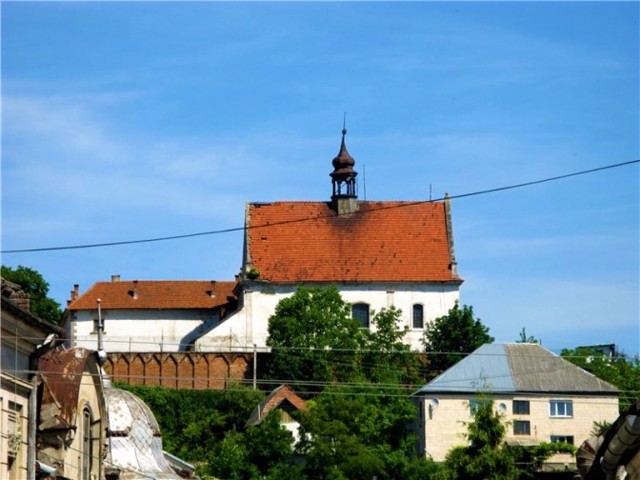
Bernardine Monastery
Temple , Architecture
The strict complex of defensive monastic buildings of the Bernardine order rises above Berezhany on Storozhisko hill.
The monastery was built in the 17th century in the Baroque style at the expense of the great crown hetman Mykola Synyavsky. The central building is the Saint Nicholas church with a stone fence, which gives it a pronounced defensive appearance. Being near the city walls, the temple was part of the system of city fortifications.
During the Soviet era, the monastery cells were used as cells in a penal colony for minors.
After the independence of Ukraine, services were resumed in the Saint Nicholas church - the monastery church became the church of the Pratulin Martyrs of the Ukrainian Greek Catholic Church, whose activities were prohibited in Soviet times. At the expense of parishioners, the dome with the cross was restored in the church, works on the restoration of the church are ongoing.
A picturesque panorama of the old city opens from the height of the monastery hill.
Berezhany on photo and video
Berezhany in news and blogs
Reviews Berezhany
Geographical information about Berezhany
| {{itemKey}} | {{itemValue}} |
|---|---|
| Region |
Ternopil |
